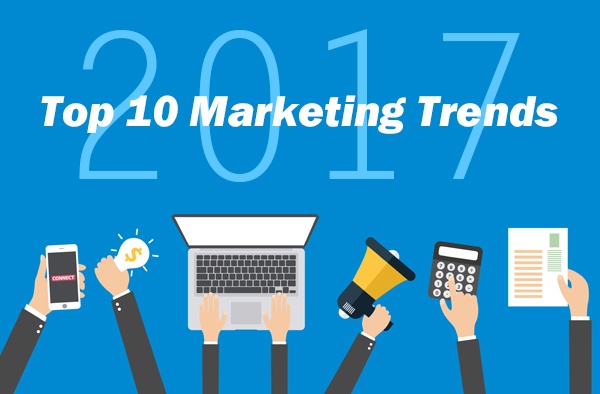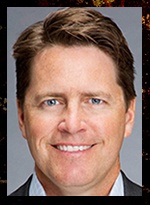
With the U.S. election finally in the rear-view mirror, the marketing community can get back to normal, or at least to debating what is normal now. After a period of rapid technological changes—connecting cars, homes, and humans—insiders agree 2017 will be a year of adapting to many of the recent trends.
“We are between two worlds of legacy thinking and the new reality. Those two worlds don’t mesh,” said David Cohen, president of Magna North America. “We’re on this kind of middle ground now.”
Part of that middle ground we predicted here—such as the mainstreaming of virtual reality and debates about transparency, fraud, and ad blocking—have come true even faster than expected. Others, such as “social shopping” and marketers having to pay consumers for their data, have met resistance.
One thing is certain: Digital media will continue its march to dominance, led by the mobile segment, which will increasingly sideline the desktop as the lead digital channel. The annual ZenithOptimedia forecast noted that total global ad spending will grow 4.5% next year, thanks to improving economies in the U.S., Asia, and Europe, while digital advertising will grow by 14% annually through 2018. Online advertising spending will pass TV ad spend next year; of that, 52% will be on mobile channels, rising to 60% in 2018.
So as the industry adapts to the connected, mobile-first world, we look forward to the following 10 trends that could shape the marketing industry in 2017.
1. Election Hangover
In 2015, we predicted marketers would have to deal with more class-conscious consumers. The rhetoric—and results—of the U.S. election and U.K. Brexit vote have brought home this dynamic.
“We are in a sort of Arab Spring moment where we’ve toppled a lot of systems but haven’t replaced them,” said Jason Tanz, editor at large of Wired.
The changes in media and democratization of information brought by the Internet have toppled legacy systems but have left a vacuum in their place, said Chris Sanderson, co-founder of consultancy The Future Laboratory. The public is more conscious of inequality, and consumers—especially younger ones—are gravitating to “post-materialism.” As a result, marketers will have to rethink principles such as brand loyalty and relationships, Sanderson noted.
Forrester is already projecting consumers in 2017 will gravitate to product-as-service marketers, such as Zipcar and Rent-the-Runway. “The future has arrived,” Sanderson told CMO.com. “It’s just not well-distributed.”
2. Trust Me, Please
Marketing was not helped in 2016 by negative press heaped on pharmaceutical and financial marketers in the wake of investigations of Wells Fargo and Epi-Pen maker Mylan. Marketers in 2017 will need to address trust issues directly and work to win consumer trust in every interaction, said Jennifer Putney, VP of full-service retirement marketing at Prudential.

“Marketers are going to have to get a lot smarter.” — Jennifer Putney, VP of full-service retirement marketing, Prudential
The issue affects all industries. The vacuum in global politics and the dislocation experienced by many is reflected in a much more vocal public, Future Lab’s Sanderson said.
Marketers will need to push transparency and clarity in their interactions and connect much more directly with consumers now, Putney told CMO.com. “It’s going to be much more direct to the individual. It’s going to be about creating that direct connection and trust with the individual on a much more personal level,” she said. “Marketers are going to have to get a lot smarter.”
3. For Sale By Owner
Verizon’s acquisition of Yahoo and Microsoft’s purchase of LinkedIn are only the tip of the spear when it comes to marketing and media M&A. Observers note that the need for scale and the increasing demands of omnichannel marketers mean more consolidation is on tap.
“Marketers are getting partner-fatigue,” said Terry Kawaja, CEO of consultancy Luma Partners. CMOs are feeling the pressure to rationalize their multiple partner and vendor relationships to make their work more manageable, making conditions ripe for a cycle of consolidation, he said.
But this is good news for agencies and publishers looking to acquire capabilities, Kawaja told CMO.com. He noted Chinese buyers have spent over $16 billion in acquisitions of U.S. ad tech companies because the prices are much more palatable than those for Chinese stocks, and there is a wider selection of viable competitors than in the more concentrated China ad market.
The market for ad tech is crowded with startups and the spigot of VC money for shut down two years ago, Kawaja said. As the money runs out, some of the marginal players will become acquisition targets for publishers and ad companies seeking data and technology capabilities.
“The vast majority will fail,” he said. “There’s a lot of companies that are gonna hurt.”
4. Mobile-Only?
First, it was mobile-friendly. Then it became mobile-first. Now some marketers are rethinking digital channels to sideline the old-fashioned desktop. Zenith estimates 75% of internet use next year will be on mobile, and agencies continue to warn that marketers who keep thinking of digital communications in terms of a big, stationary desktop screen need to get with the program.
The ramp-up in the use of artificial intelligence in the form of digital assistants and chatbots will only deepen this movement. Forrester’s predictions for 2017 note that chatbots built on the Facebook Messenger and Kik apps in 2016 already number 50,000, and 45% of U.S. adults navigate online using assistants such as Siri, Google Assistant, Cortana, or Alexa, which are mainly accessed on their mobile phones. According to Forrester, these applications are going to move the needle further in 2017. The cell phone is now officially in control.
When Hulu launched eight years ago, its content was viewed 100% on desktop screens, noted SVP of advertising sales Peter Naylor. Now the desktop is “forever contracting,” he told CMO.com, “and I don’t think that is going to bounce back.”

5. Peak Mobile?
But as mobile becomes the standard, it is also maturing. Most industry observers agreed we’re nearing the saturation point in both global smartphone ownership and time spent on mobile media. Attention on mobile platforms may soon become a zero-sum game.
The growth in time spent with mobile devices is leveling off, according to eMarketer’s annual survey figures. Average time spent consuming media daily among adults has increased only by a few minutes per year in recent years, as smartphone use has exploded, so most of the increase in mobile use has come at the expense of other media or is due to multitasking, said Geoff Ramsay, CIO of eMarketer.
There are 14 billion devices connected to the Internet today, two per person on average; by 2020, there will be 35 billion, or almost five per person on the planet, Ramsay noted. At that rate, with only 24 hours in the day, audience fragmentation can only get worse.
“Multitasking is rampant,” he said. “Audiences and their attention are not just fragmented anymore; they’ve been atomized into a fine mist.”
6. Jerking The (Block)Chain:
Bitcoin got a bad rap in its early days as a dark web application, but it’s going legit now, with respectable banks, media-trading desks, and other mainstream organizations investing in blockchain applications.
“In the financial world, that could be enormous,” Prudential’s Putney said.
Blockchain technology—an online ledger with values that can only be transferred but not copied—allows for new ways to process electronic payments securely. That is bound to help any number of transactions, especially when combined with automation and artificial intelligence. Ohad Zeira, Verizon’s director of consumer, envisioned a future where an automated lawn mower could pass your home and offer the service in exchange for an automated payment via blockchain than it can use to pay for more gas, repairs, or other uses.
Blockchain will disrupt advertising like social media and the Internet did before, said Michael Terpin, CEO of consultancy Transform Group. Because it is cryptography-based, not cookie-based, blockchain is safer than having credit-card information in the cloud, where “if you puncture the cloud, it all comes spilling out,” he said. And any phone with Internet access can use blockchain, so it will aid transactions in developing countries where people have less access to banking, Turpin said.
“What the web did to democratize communications … blockchain will do for monetization,” he said.

7. Who Runs The World?
This was the year when two agency CEOs lost their jobs because of their attitudes and actions toward women. And a party invitation for “attractive females only” set off a firestorm at the Cannes Lions festival.
Those incidents, coupled with the increased scrutiny to the racial and gender gap in the U.S. electorate and the anti-immigrant movements in Europe, virtually guarantee that diversity will be a major issue at agencies, media companies, and marketing departments everywhere next year.
Diversity of all kinds is a necessity now, said Naama Bloom, SVP of integrated marketing at platform SheKnows Media. “If you’re building a product for women and you don’t have any women in your team, you’re not going to succeed,” she said.
8. DIY Marketing
We’ve gone past personalization to consumers creating their own marketing. This goes way beyond user-generated content.
The addition of artificial intelligence into marketing will help optimize the combination of creative and media to produce much more targeted advertising, said Dave O’Flanagan, CEO of Boxever. That will allow consumers more direct interaction with brands in 2017, he told CMO.com.
“As mass personalization takes root, segment sizes are shrinking and eventually will reduce down to a ‘marketing singularity,’ where they cannot be reduced any further: segments of one,” said Jon Bond, founder and “chief tomorroist” at Tomorro LLC.

9. Lawyer Up
In conferences and conversations, issues of transparency among clients, agencies, and media have been addressed with four words: Get it in writing.
It’s not simply a matter of legal or illegal practices, but clients are confused and looking for clarity, said Marianne Gambelli, CIO of Horizon Media. “It’s tainted the industry with a brush that will be hard to unbrush,” she told CMO.com.

Indeed, the ANA Media Transparency report only highlighted a potential issue, and it’s now up to marketers and agencies to truly review contract terms, said Greg Paull, R3’s principal and co-founder. He noted that more than half of marketers don’t have a master service agreement that would give them 100% access to the rebates they might otherwise be entitled to. That is going to change in 2017.
“It’s going to be a case of lawyers at 10 paces,” he said.

10. Enough Test-And-Learn
And speaking of lawyers and accountability, digital’s early days are officially over. It must become more accountable as it takes “lead dog status” in 2017, said Kurt Hawks, SVP of cross-device and video at Conversant.
Marketers are still investing tactically, not strategically, in digital, but that will change in 2017, R3’s Paull said. He noted we’re already seeing global digital reviews from Unilever, Samsung, and other marketers determined to change this situation.
Addressing fraud is one factor, but more important will be proving that strategies can actually deliver, Hawks told CMO.com.
“One of the trends to watch for in 2017 will be a focus on tying all marketing activities to actual revenue,” he said.
Source: CMO.com





